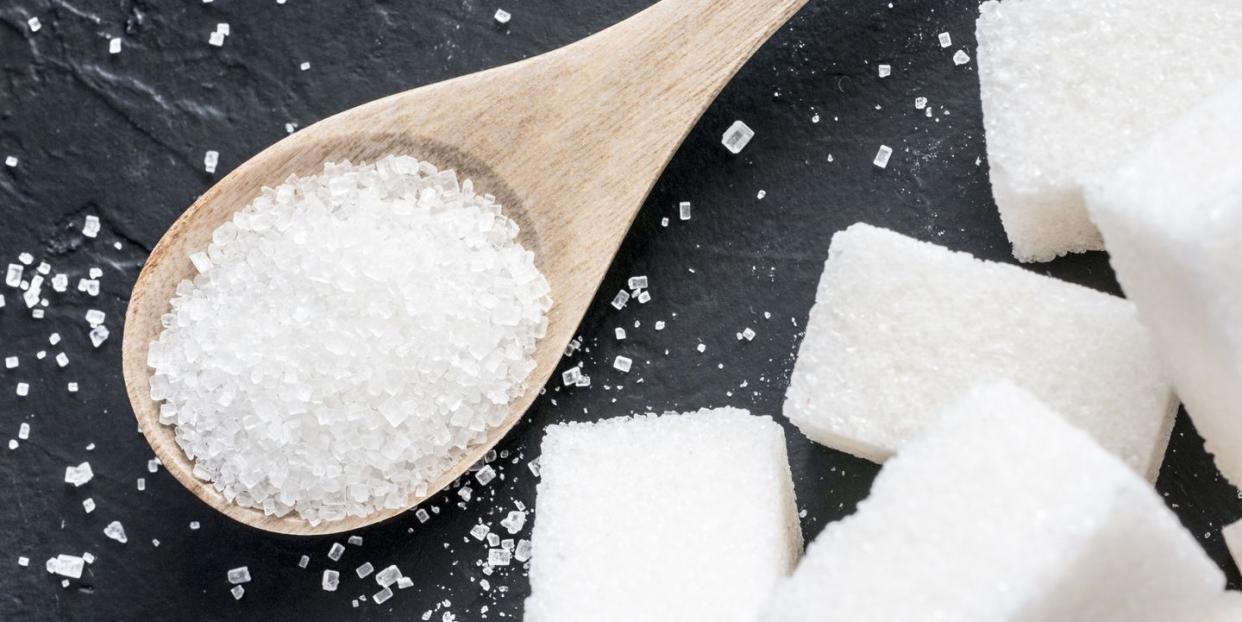Too Much Added Sugar Can Up the Amount of Fat Around Your Heart

According to new research published in the European Journal of Cardiology, too much added sugar in your diet can increase the amount of fat around your heart and abdomen.
This can lead to health issues down the line, such as heart disease and diabetes.
It’s best to limit added sugar to less than 10 percent of your total energy intake.
Any food with carbohydrates—that includes vegetables, fruits, grains, and dairy—has naturally occurring sugar, and that’s considered a primary fuel source for your body.
But then there’s the category known as added sugar—true to its name, that’s the kind added to foods and beverages. For cyclists, fuel for long rides often comes in the form of sugar-filled snacks and beverages, which are necessary to not bonk—and sometimes, you really do need that pack of jelly beans or bottle of Gatorade from the gas station to get you through a particularly tough ride.
However, a new study highlights the dangers of having too much of these sugars in your diet.
Research published in the European Journal of Cardiology links too much added sugar to increased adipose tissue—also known as fat—in both the abdomen and around the heart, which can significantly increase your risk of health issues down the line.
Data was obtained from the Coronary Artery Risk Development in Young Adults, an ongoing cohort study that includes just over 3,000 healthy participants aged 18 to 30. Researchers looked at food and beverage intake over a 20-year period, as well as scans of the chest and abdomen.
They found that higher sugar intake was associated with higher fat volumes later in life, which were linked to higher risk of diabetes and heart disease. They also concluded that those with high added sugar consumption was connected to lower intake of healthy foods like vegetables, legumes, and whole grains.
In terms of why this happens, study coauthor Lyn Steffen, Ph.D., Director of Public Health Nutrition at the University of Minnesota School of Public Health told Bicycling that consumption of added sugar creates a biological environment in which excess sugar is converted into fatty acids, and those get stored as triglycerides and lipids, a type of body fat.
Some fat is good, since it protects the vital organs, Steffen added. But having too much has been linked to numerous risks, including cardiovascular issues, diabetes, obesity, and fatty liver disease.
[Gravel! prepares you with everything you need to know to crush it, including the best gear, how to train, and much more!]
How much sugar can you eat before it’s considered excess? Although the study was observational, and there are some genetic factors and physiological differences when it comes to how much sugar each person can process before it gets turned into fat, Steffen said. But in general, consuming more than 50 grams of added sugar per day over a long period of time was related to greater fat volumes.
“We used 50g per day as the cutoff value, since it pretty much aligns with the national recommendation of limiting added sugar to less than 10 percent of total energy intake,” she said.
For reference, one 16-ounce bottle of Coke has 44g of added sugars, most barbecue sauces come in at 9g of added sugar for two tablespoons, and many flavored yogurts can have up to 30g of added sugars.
Checking labels to get an idea of your true added sugar intake is the best approach, suggested Steffen, especially since sugar amounts may be higher than you might think in foods like pasta sauce, ketchup, instant oatmeal, and even protein powder and sports drinks.
You Might Also Like

